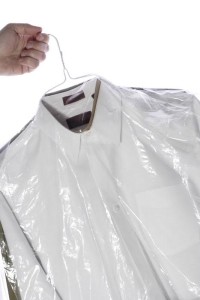 Dry Cleaning is a simple process that cleans clothing without the use of water. However, despite its name, the process is not completely dry. Fluids are used in the dry cleaning process.
Dry Cleaning is a simple process that cleans clothing without the use of water. However, despite its name, the process is not completely dry. Fluids are used in the dry cleaning process.
A Brief History
Dating back to the 1840’s in Paris, there was a surprise discovery when a petroleum-type fluid was accidentally spilled on a greasy fabric. It quickly evaporated and the stains were miraculously removed. The firm of Jolly-Belin is credited as the first dry cleaning firm.
Solvents
In the early days, several fluids were used as dry cleaning solvents, including camphene, benzene, kerosene, and gasoline. These fluids are dangerously flammable, dry cleaning was considered a hazardous business until safer solvents were developed.
In the 1930’s, percholoroethylene, or perc for short, was introduced and is used today in many dry cleaning plants. It proved to be safer and clean better. Other cleaning solvents have been added, including hydrocarbon, Green Earth, and others that are currently being introduced and tested.
Machines
A dry cleaning machine is similar to a combination washer and dryer, only larger. The clothing is loaded into these machines and the solvent is gradually added to lift and flush away the soil. After the cleaning cycle, the solvent is drained and extracted through a spin cycle. Once the clothes are finished extracting, the drying process begins. Warm air circulates through the machine vaporizing the solvent left on the clothes. When finished there is no remaining residue or solvent odor.
Now you have a better understanding of this “magical process’ of dry cleaning.
